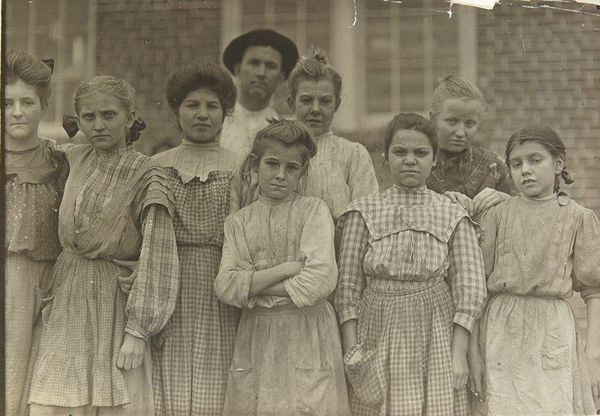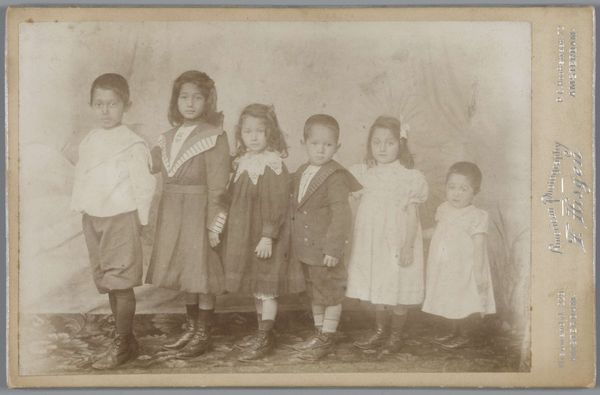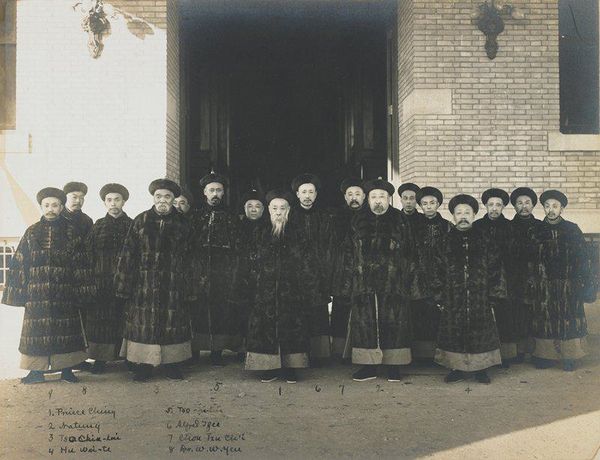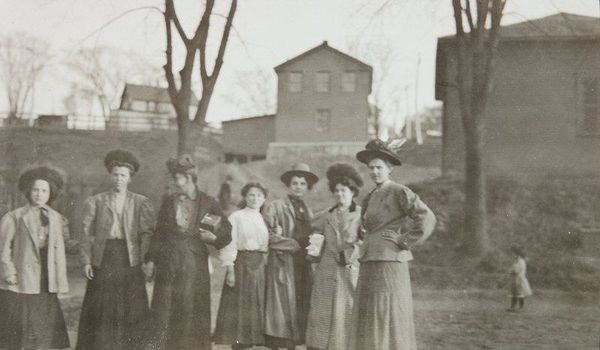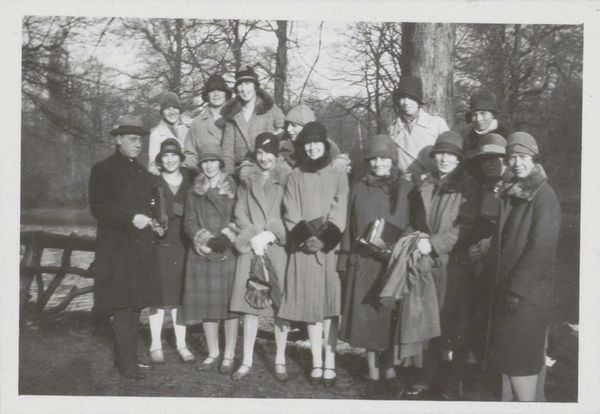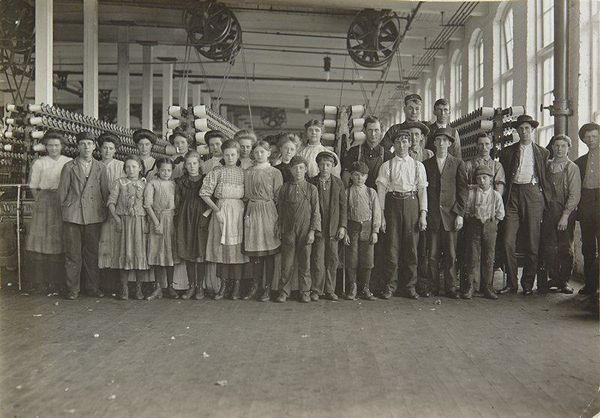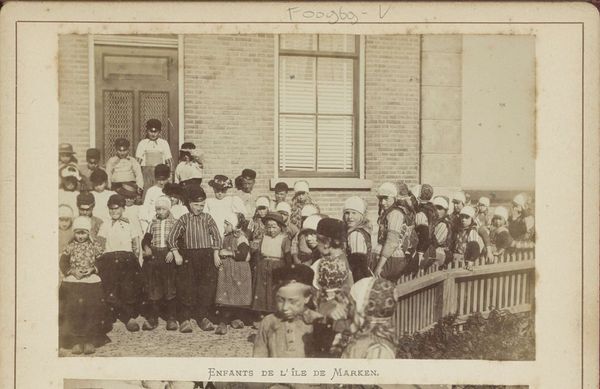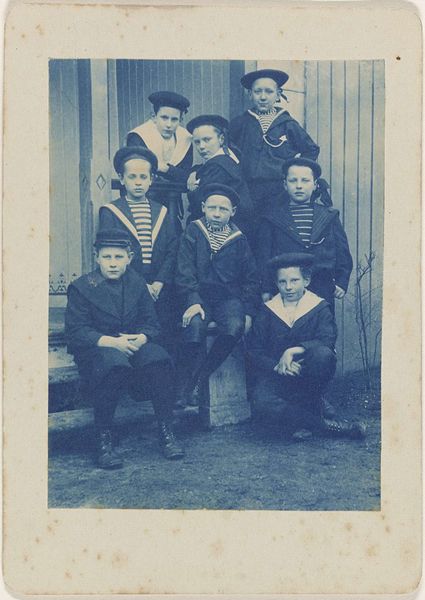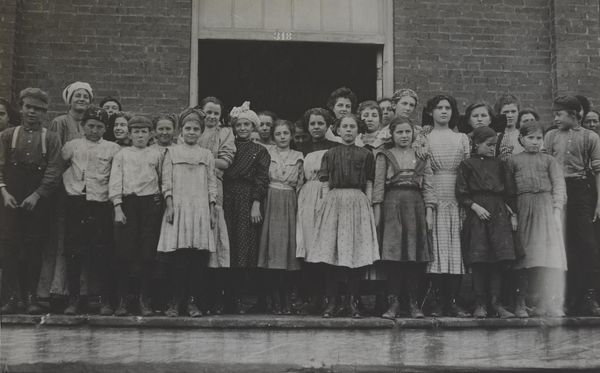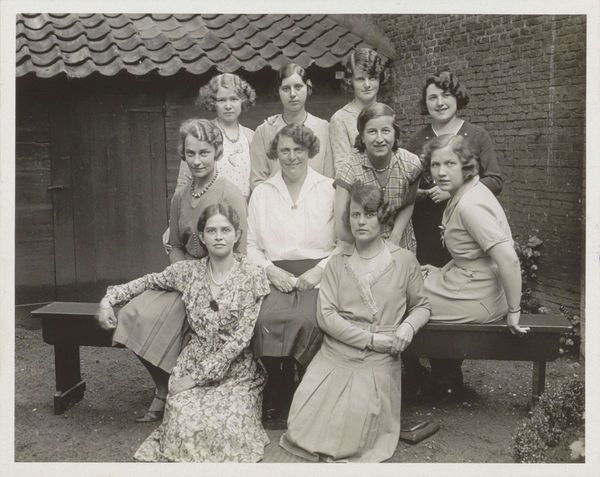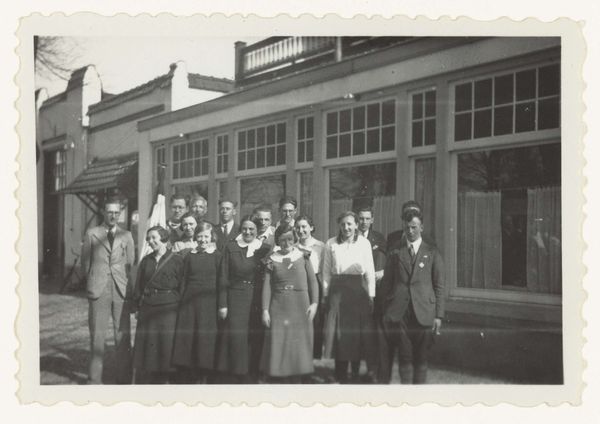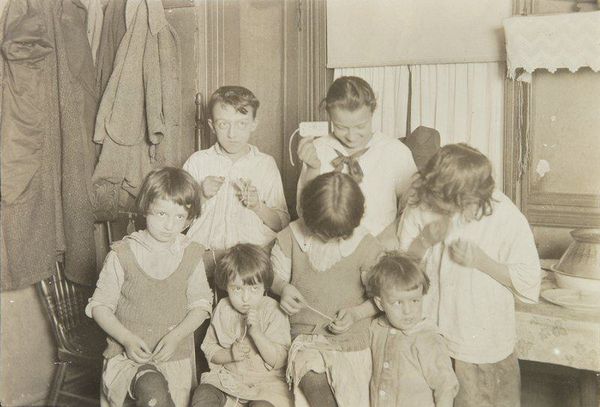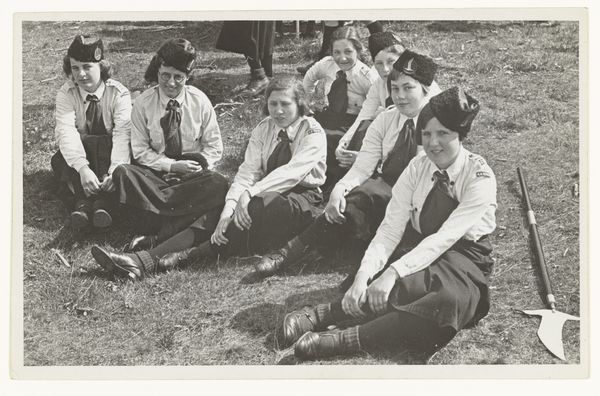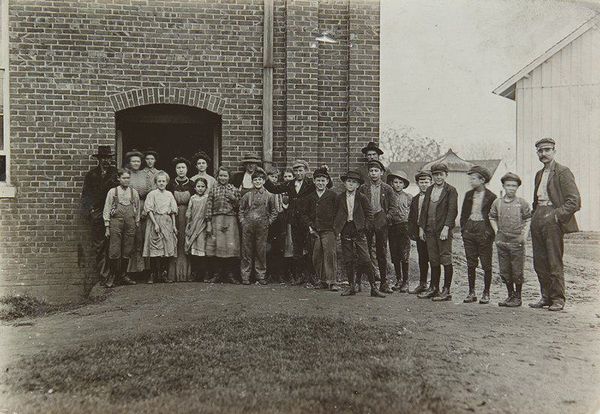
print, photography, gelatin-silver-print
#
portrait
#
print photography
# print
#
archive photography
#
photography
#
historical photography
#
gelatin-silver-print
Dimensions: height 167 mm, width 209 mm
Copyright: Rijks Museum: Open Domain
Editor: Here we have a gelatin silver print, "Groepsportret van kinderen in Bunschoter klederdracht", or "Group portrait of children in Bunschoten costume," taken sometime between 1900 and 1930 by Richard Tepe. The children, posed with such serious expressions, give this portrait a rather somber tone. How do you interpret this work within its historical context? Curator: This photograph speaks volumes about cultural identity and representation. Bunschoten, known for its strong regional identity, used traditional clothing to reinforce community ties and distinguish themselves. This image, beyond a simple portrait, becomes a statement about preserving cultural heritage amidst modernization. Consider, who controlled the visual narrative, and for what purpose? Was it an insider documenting their community, or an outsider looking in? Editor: That's a fascinating point. I hadn't considered the power dynamics at play in documenting a specific cultural identity. Does the way these children are posed and dressed tell us something about their roles or expectations within that society? Curator: Precisely. Notice the uniformity – the matching costumes and serious expressions. This suggests the importance of conformity and the pressure to adhere to traditional roles, particularly for children. Also, the children are expressing self-reliance with arms folded in the front and sturdy clogs. Now think about how such staged representations contribute to shaping both internal and external perceptions of this community. Is it an accurate depiction, or a curated performance? Editor: This makes me think about the role of photography itself in shaping perceptions of identity, both then and now. It seems like a powerful tool, but also one that can easily reinforce stereotypes. Curator: Indeed. And that’s precisely where the activist’s lens is crucial – in questioning the narratives presented to us and uncovering the complexities behind them. We’ve both learned that photography freezes a moment, however staged and symbolic, and ripe for discussion on power, identity, and representation.
Comments
No comments
Be the first to comment and join the conversation on the ultimate creative platform.
